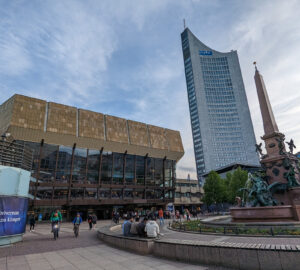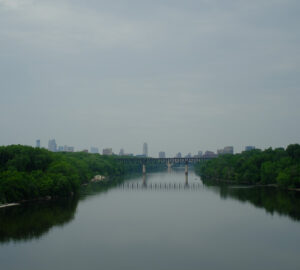Malcom Gladwell once quipped “the Swiss can be divided into two general categories: those who make small, exquisite, expensive objects and those who handle the money of those who buy small, exquisite, expensive objects.”
One gets the impression if Mr. Gladwell was more of an oenophile, he might have added delicious natural wine to that list.
Switzerland, of course, is bordered by such wine-producing giants as France, Italy, and Germany, so it shouldn’t come as a surprise that the landlocked mountain nation produces, and consumes, a notable amount of wine. In fact, the Swiss consume almost all of the wine they produce—less than three percent of Swiss wine is exported. So if you want to try Swiss wine, it’s best to do it in country.
Zurich is Switzerland’s largest city and home to a close-knit natural wine scene. It’s the sort of community whose members celebrate and supports each other. In fact, if you find one of the institutions on this list, you will surely have the rest of this list recommended to you. (I also found Zurich’s baristas were keen to point me towards these places, even before they learned I liked natural wine.)

Metzg
I usually don’t expect to have a conversation about the nuances of regional American barbecue styles when visiting a European wine shop, but there’s a lot that’s surprising about Metzg owner Marlene Halter. The classically trained chef taught herself butchery and draws from both Swiss and American culinary traditions in her shop. Part artisanal butcher, part bottle shop, Metzg is essentially one-stop shopping for your next wine party, or in my case, dinner. If you prefer to dine-in, Metzg offers a very reasonable corkage fee as well as a by-the-glass menu to go with their barbecue-centric food menu.
The bottle selection at Metzg is all killer and no filler; the sort of all-star cast that might paralyze with indecision an American tourist with limited bag space (I speak, of course, purely hypothetically). Halter applies the same sourcing philosophy to Metzg’s wine and meat. Ecological and ethical responsibility are a priority, but rather than relying on a certification or label, Halter prefers to work with farmers and vignerons she can personally vouch for.
In addition to celebrity winemakers like Sicily’s Frank Cornelissen and Austria’s Gut Oggau, expect a wide array of Swiss whites and reds, and even a selection of traditional cider and Japanese sake. I confess to Halter that although I’m interested in Swiss wine, I’m a complete neophyte, and she patiently walks me through each bottle.
In the end I settle on a bottle of “Parcelle no. 982” from Domaine de la Ville, an unfined, unfiltered Gamay from Morges, Switzerland, (a French-speaking region near Lake Geneva). The bottle both surprises and delights, with a firm structure reminiscent of a Morgon. Although the 13.6% alcohol is a bit heftier than most Gamay I drink, it’s bright and refreshing on the palate, with that telltale red cherry note I expect and love.
But perhaps the real star at Metzg is the meat (“metzgerei” after all, is German for “butcher shop”). I take home 100 grams of cured pork belly. Rich and creamy with a bit of funk—it coats the palate with a complex umami that begs for another sip of red (or white, or pink, because honestly this would pair with anything).

Gamper Bar
Gamper Bar is, quite possibly, the perfect bar. It somehow perfectly straddles that line of casual and refined. It’s the sort of place where a couple in the corner can enjoy a candlelit date, while a regular pulls up a stool and reads the newspaper at the bar. The bar is the self-proclaimed “little sister” to Gamper—a tasting-menu-only restaurant two doors down.
The by-the-glass menu is short but sweet, with a nice selection of sherries and vermouth to go with the expected bubbles, white, orange, and reds. This BTG list includes several Swiss producers, but also familiar wines like Pure Magique Pas Des Chimiques from Ardèche, France-based Danish vigneron Anders Steen. Per the recommendation of Gamper Bar co-owner Balz Coray, I try a glass of Pinot Blanc Vieilles Vignesn. Coray tells me he enjoys this wine for its mouthfeel, more than for its flavor or acidity.
As one might expect from a bar with such a culinary legacy in the family, there’s plenty of food options on the menu. But in contrast to the high-end dining experience down the street, Gamper Bar’s food is simple and unadorned: tins of sardines, sourdough bread, charcuterie, and cheese—sliced to order. I settle on some buttery aged comté, which pairs wonderfully with the funky and quaffable “Manila,” a 100% Blaufrankisch cuvée from Burgenland, Austria producer Martin Nittnaus.
My second night here I stumble upon a live jazz trio—who all opt to drink beer on their break—that perfectly completes the Art Deco vibe.

169 West Kaffee & Wein
It’s rare to find a place that executes specialty coffee and natural wine equally well, but 169 West threads the needle. The vibe here might lean coffee shop, but don’t be fooled, proprietor Jean-Denis Roger, a Loire Valley transplant to Zurich, has long been a leader in the Zurich natural wine scene and has curated an enviable list.
I arrive in the mid-afternoon and start with coffee—a single origin Brazilian espresso from local roaster Vertical Coffee Roasters—before moving to the by-the-glass menu.
A glass of Enderle & Moll’s Müller Thugau proved to be the highlight pour from my time in Zurich. It’s the cloudy, peachy white I crave in the summer (or year round to be honest). Approachable, dangerously drinkable, but with enough complexity to merit your attention. It’s the perfect wine to bring to a cook out, drink poolside, or, in my case, sip in a coffee shop in Zurich. It’s my first time drinking a wine from Enderle & Moll and I have a sudden impulse to seek out more from this cult German duo.
Although Roger offers plenty of wines from his native France, he also has put together an impressive list of Swiss wines, including Rouge de la Madeleine by Cherouche—a pioneer in the Swiss natural wine scene.
“There’s two types of natural wine makers. The first tries to keep things pure,” says Roger. “Cherouche is that first type. Zero Zero.”
The cuvée is A 70/30 blend of Gamay and Pinot Noir. It’s wild, electric, with an arresting energy.
“It’s from 2014 but it still has so much acidity,” says Roger.
If there’s one thing that unites all of my wine experiences in Zurich, it’s the passion and hospitality of the individuals that served me. It’s clear they’re true believers who are excited to share a product they love with their guests. I, for one, wouldn’t mind another glass.
































